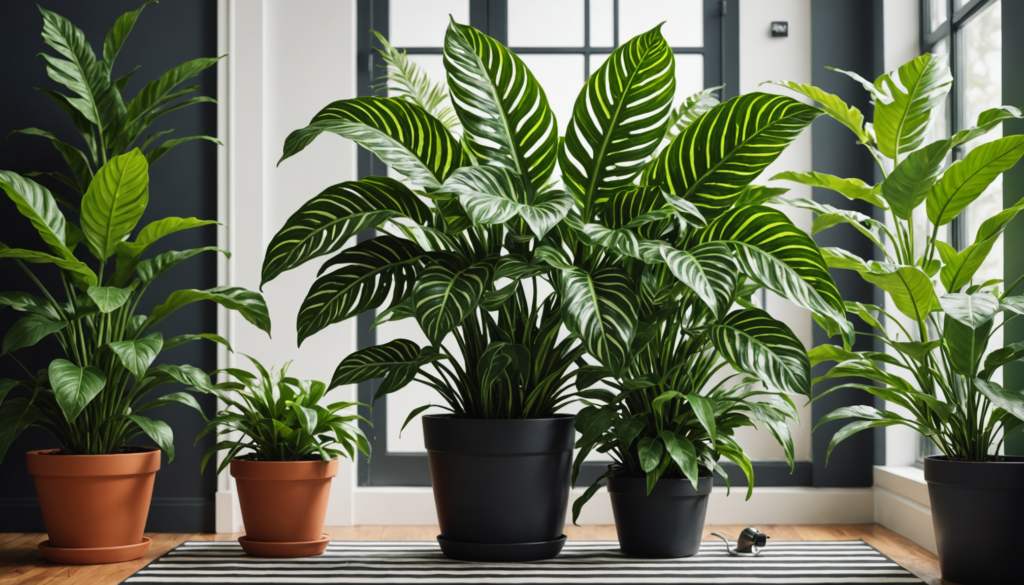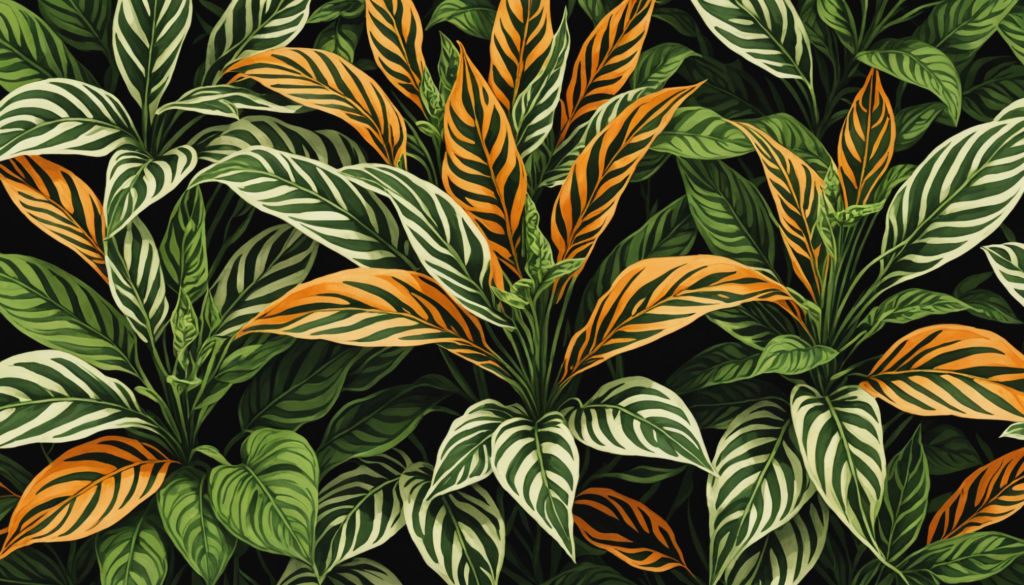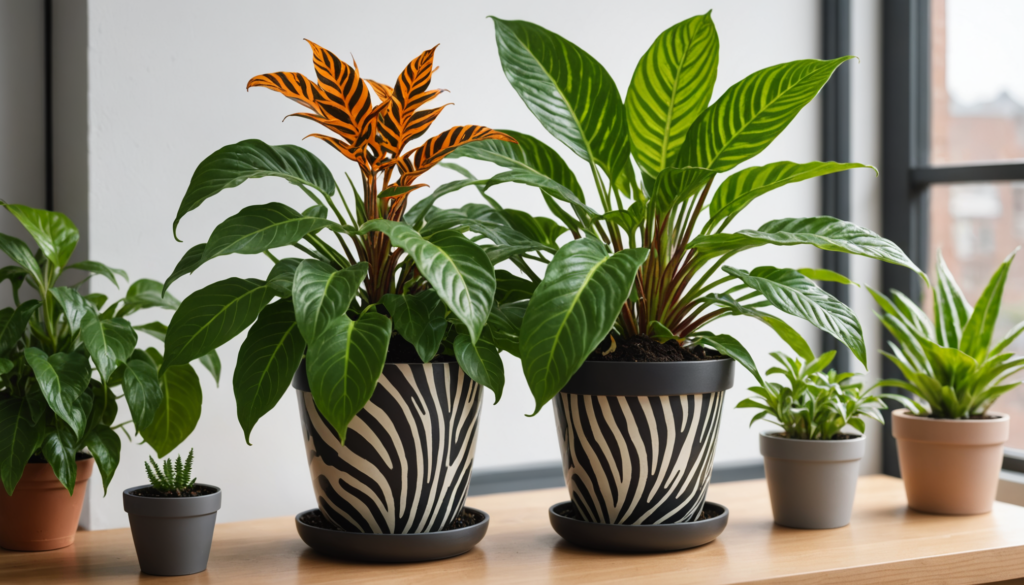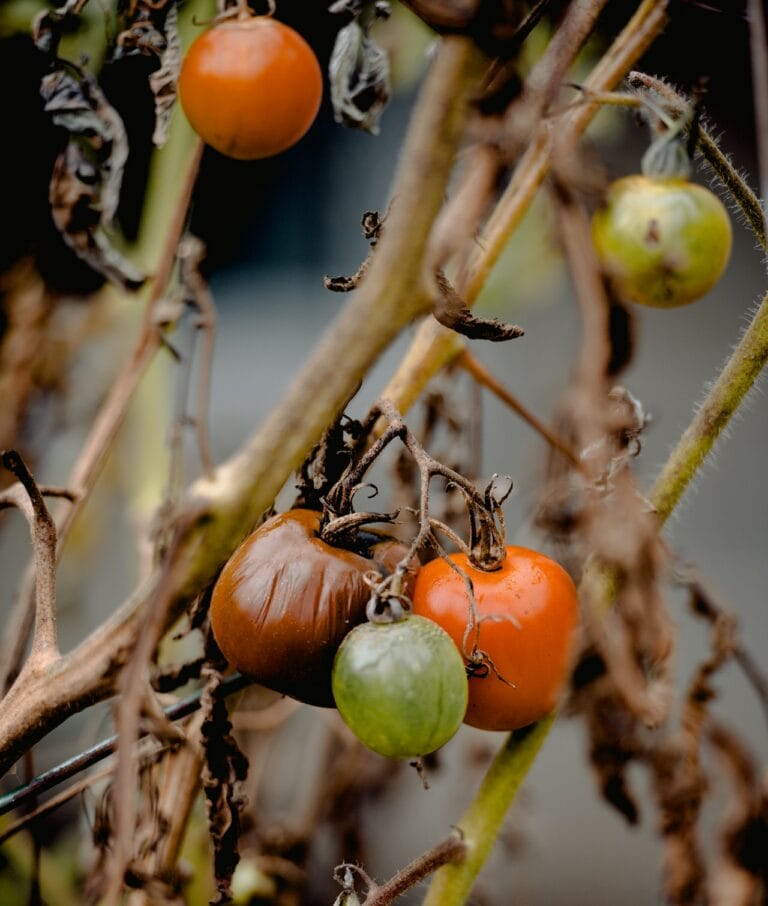Have you ever seen a plant that looks like it’s wearing stripes? That’s the Zebra Plant, or Aphelandra squarrosa, and mastering Zebra Plant Care Indoor can transform your space into a lush, tropical paradise! Caring for these stunning houseplants is not just fun but also important, as they can brighten up your room and purify the air. Without the right care, however, you might find your beautiful Zebra Plant wilting or losing its vibrant leaves.
In this article, we’ll dive into essential tips for keeping your Zebra Plant thriving. Whether it’s understanding how to water it properly, knowing when to prune, or recognizing pesky pests that could harm it, we’ve got you covered. Get ready to learn how to create the perfect environment for your Zebra Plant, ensuring it stays happy and healthy for years to come! Let’s get started on this exciting gardening adventure!
Understanding Zebra Plant Care

The Unique Characteristics of Aphelandra Squarrosa
The Zebra Plant, or Aphelandra squarrosa, hails from Brazil’s Atlantic Forests. It thrives in warm, humid conditions. Its standout feature is its dark green leaves with light veins, resembling zebra stripes. These glossy leaves make it a popular choice for indoor gardening. While it can bloom with yellow flowers and bracts, this is rarer indoors.
Why Zebra Plants Make Great Houseplants
Zebra Plants are well-suited for indoor environments. Their vibrant, tropical foliage adds life and color to any space. They are perfect for brightening corners and creating a refreshing atmosphere. With proper care, including the right light, humidity, and moisture, these plants can thrive indoors. Their unique look and ability to flourish inside make them favorites among plant lovers.
Key Elements of Zebra Plant Care
To keep a Zebra Plant healthy, focus on these key care elements:
- Light: Zebra Plants prefer bright, indirect light. Direct sunlight can scorch their leaves, so placing them near a window with filtered light is best.
- Watering: Consistently moist soil is ideal, but avoid waterlogging. Water when the top inch of soil feels dry to the touch. Overwatering can cause lower leaves to brown, while underwatering leads to wilting.
- Temperature: These plants thrive between 18–21°C (64–70°F). Keep them away from temperatures below 15°C (59°F) to prevent damage.
Providing the right care and environment helps maintain the health and beauty of the Zebra Plant, ensuring it remains a vibrant part of your indoor garden.
Source: Wikipedia
Tips on Watering Your Zebra Plant

How to Properly Water Your Zebra Houseplant
The Zebra Plant, or Aphelandra squarrosa, needs to stay moist but not too wet. It thrives with frequent, small waterings rather than infrequent, heavy ones. This approach helps stop the lower leaves from turning brown and falling off, which happens if the plant gets too much or too little water.
Make sure the water reaches the roots but doesn’t pool in the pot. Proper drainage is crucial for healthy roots. Check the top inch of soil; it should be moist but not soggy. If it feels dry, it’s time to water again (Wikipedia).
Signs of Overwatering vs. Underwatering
Recognizing signs of too much or too little water is vital for a healthy plant.
- Overwatering: Causes root rot, which can hurt the plant. Look for:
- Yellow leaves
- Soft, mushy stems
- A bad smell from the soil
- Underwatering: Also harms the plant. Watch for:
- Brown, crispy leaves
- Wilting stems
Keep an eye on these signs to adjust watering and keep the plant healthy (The Spruce).
Recommended Watering Schedule for Indoor Growth
For best results, water the Zebra Plant often but let the top soil dry a bit between waterings. Check the soil once or twice a week. The plant thrives in temperatures between 18–21 °C (64–70 °F) and needs consistent moisture. A humidifier or pebble tray can help maintain the right humidity (Wikipedia).
| Condition | Watering Frequency | Soil Condition |
|---|---|---|
| Moist | Every 3-4 days | Top inch feels slightly dry |
| Overwatered | Stop watering | Soil smells bad, stems are mushy |
| Underwatered | Water now | Leaves are crispy and wilting |
Pruning and Repotting Your Zebra Plant

Caring for the Zebra Plant, or Aphelandra squarrosa, involves pruning and repotting to ensure it stays healthy and vibrant. Below are key tips for these essential care practices.
When and How to Prune Your Zebra Plant
Pruning helps maintain the plant’s health and shape. The best time to prune is in spring or early summer when the plant is growing. This timing helps the plant recover quickly and encourages new growth.
- Remove dead or yellowing leaves: This improves air circulation and promotes healthy growth.
- Make cuts above a leaf node: Doing this encourages branching and helps the plant grow bushier.
- Use clean, sharp scissors or pruning shears to prevent damage to the plant.
Pruning keeps the plant looking good and reduces the risk of diseases, which can occur if dead leaves remain on the plant.
Repotting Techniques for Optimal Growth
Repot the Zebra Plant every 1-2 years to give it room to grow. Spring is the best time because it helps the plant recover from shock during its growing season. Follow these steps:
- Select a new pot: Choose one size larger than the current pot. Ensure it has drainage holes to prevent root rot.
- Use a well-draining potting mix: A tropical plant mix is ideal as it retains moisture without getting soggy.
- Remove the plant gently: Take it out of its current pot carefully to avoid damaging the roots. Shake off any old soil.
- Place the plant in the new pot: Fill with fresh potting mix around the roots, ensuring the top of the root ball is level with the pot’s rim.
Repotting provides fresh soil and more space for growth, leading to healthier foliage and more vibrant blooms.
Choosing the Right Pot for Your Aphelandra Squarrosa
Selecting the right pot is crucial for the plant’s health.
- Material: A porous pot, like terracotta, allows better air circulation, preventing overwatering issues.
- Size: The pot should be large enough for the root system, with about 1-2 inches of space between the roots and the pot edges. This space is necessary for growth and prevents soil compaction.
- Drainage: Ensure the pot has adequate drainage holes to prevent root rot.
By following these guidelines, the Zebra Plant will have the ideal environment to thrive and enhance any indoor setting with its beauty.
Managing Pests in Zebra Plant Care

Caring for a Zebra Plant, known scientifically as Aphelandra squarrosa, involves staying alert to pests that can damage its vibrant foliage. Knowing which pests are common, how to control them, and identifying signs of infestation helps keep the plant healthy.
Common Pests Affecting Zebra Plants
Zebra Plants can attract various pests. Common ones include:
- Fungus Gnats: Small, dark flies found in the soil. Their larvae can harm young roots.
- Spider Mites: These tiny creatures form webs on leaves and suck plant juices, causing yellow leaves.
- Mealybugs: Oval, white bugs that cluster on stems. They drain the plant’s sap, weakening it.
- Thrips: Small, slender insects that cause leaves to discolor and develop spots.
- Scale: Brown, shell-like pests that stick to plants, leading to yellowing and leaf drop.
Detecting these pests early helps protect Zebra Plants from severe damage.
Effective Pest Control Methods
Keeping Zebra Plants free of pests is vital for their health. Here are some methods:
- Manual Removal: Use a damp cloth to wipe pests off leaves. This works well for small issues like spider mites.
- Insecticidal Soap: Spray affected areas to kill soft-bodied insects. It’s safe and effective.
- Neem Oil: This natural pesticide stops pests from reproducing. It’s safe for plants and people.
- Diatomaceous Earth: Sprinkle this powder around plants to deter crawling insects.
- Regular Inspection: Check plants often to catch problems early. This makes pest control easier.
Signs Your Plant May Have a Pest Problem
Spotting pest problems early is crucial. Watch for these signs:
- Discoloration: Yellow or brown leaves can mean pest stress.
- Webbing: Fine webs often indicate spider mites.
- Sticky Residue: A sticky film on leaves may point to sap-sucking pests like mealybugs.
- Leaf Drop: Losing leaves quickly can be a sign of a serious pest issue.
- Visible Pests: Seeing insects on plants confirms a pest problem.
By recognizing these signs, plant owners can take quick action to manage pests effectively.
Propagation Methods for Zebra Plants

Different Techniques for Propagating Aphelandra Squarrosa
Zebra Plants, or Aphelandra squarrosa, are popular houseplants that can be propagated using several effective techniques. These methods are straightforward and well-suited for indoor gardening.
- Cuttings: This is a common method for propagating Zebra Plants. To do this, take stem cuttings that are 4 to 6 inches long. Each cutting should have at least one leaf node, which is a small bump where a leaf grows. This node is crucial for root growth. You can place these cuttings in water or directly in well-draining soil to encourage root development.
- Division: This technique is best during repotting. Carefully divide the plant into smaller sections, ensuring each has roots and several stems. This helps renew the plant and produce new, healthy plants.
- Water Propagation: For this method, place cuttings in water until roots appear. Once roots have developed, transfer them to soil. This approach is great for those who like to see root growth before planting.
Best Time of Year for Propagation
The best time to propagate Zebra Plants is in spring or early summer. This period coincides with the plant’s active growth phase, promoting better root development. Warm weather and more light help new plants flourish. Timing is crucial for successful propagation.
Caring for Newly Propagated Zebra Plants
Proper care is essential after propagation. Here are some key guidelines:
- Environment: Newly propagated plants thrive in warm and humid conditions. Aim for a humidity level of about 60%. If the air is dry, use a humidifier or place the plant on a pebble tray with water to maintain moisture.
- Watering: Water new plants sparingly until they’re established. Before watering again, ensure the top inch of soil is dry. Overwatering can cause root rot, so ensure the soil has good drainage.
- Lighting: Provide bright, indirect light. Direct sunlight can damage the leaves, while too little light can slow growth. A spot near a south or east-facing window works well.
Following these care tips will help Zebra Plants thrive indoors. The right techniques, timing, and care create an ideal environment for strong and vibrant growth.
Conclusion
Caring for your Zebra Plant, or Aphelandra squarrosa, is a fun and rewarding adventure! Remember, these plants thrive in indirect light and enjoy consistently moist soil. Pay attention to their watering needs; knowing the signs of overwatering and underwatering will help your plant stay healthy. Don’t forget to prune and repot your Zebra Plant when needed to keep it looking bushy and vibrant!
With proper care, your Zebra Plant will not only survive but flourish, adding a touch of tropical beauty to your home. So, keep exploring the world of indoor gardening and discover all the fantastic things you can do with your plants! Happy gardening!
FAQs
1. How often should I water my Zebra Plant?
Zebra Plants, known scientifically as Aphelandra squarrosa, need consistent moisture. Water them often with small amounts instead of large, infrequent watering. Keep the top inch of soil moist. If the soil feels dry to the touch, it’s time to water. However, avoid letting the soil become soggy, as this can cause the lower leaves to brown and fall off. Monitoring the soil’s moisture level is crucial for the plant’s health.
2. What type of light is best for Aphelandra squarrosa?
This plant thrives in bright, indirect light. Place it where it gets plenty of light without direct sunlight, which can scorch its dark green leaves. The Zebra Plant may bloom occasionally with prolonged light exposure, but it rarely blooms in typical indoor settings. Proper lighting helps the plant maintain its lush foliage.
3. Can I grow a Zebra Plant outdoors?
Primarily an indoor plant, the Zebra Plant can grow outdoors if the climate mimics its warm, humid, and shaded native habitat. Avoid temperatures below 15°C (59°F) as they can harm the plant. In suitable climates, outdoor growth is possible with careful attention to consistent moisture and protection from direct sunlight.
4. My Zebra Plant isn’t blooming. What can I do to encourage blooms?
While the common name “zebra plant” refers to its eye-catching white veins, it blooms in late summer. To encourage this, provide bright, indirect light, especially during spring and summer. Use a balanced fertilizer during these months for essential nutrients. Pinch leggy growth for bushier growth. Cooler temperatures in early fall can also encourage blooming, as like many flowering plants, consistent care requirements are key.
5. How often should zebra plants should be repotted, and what type of soil is best?
Zebra plants should be repotted typically spring every one to two years. This provides fresh nutrients. Use well-draining, slightly acidic soil to avoid waterlogged conditions. After repotting, avoid overwatering and let the soil slightly dip dry between waterings.






